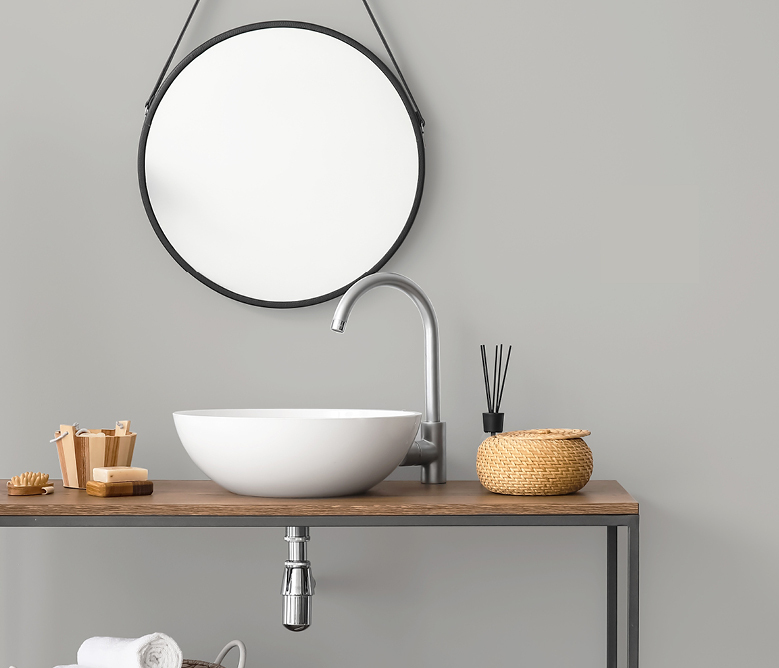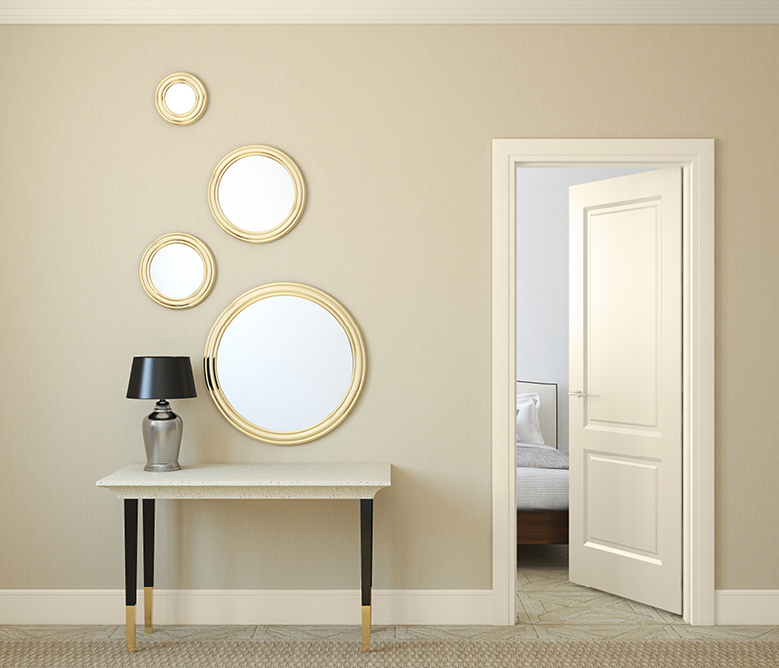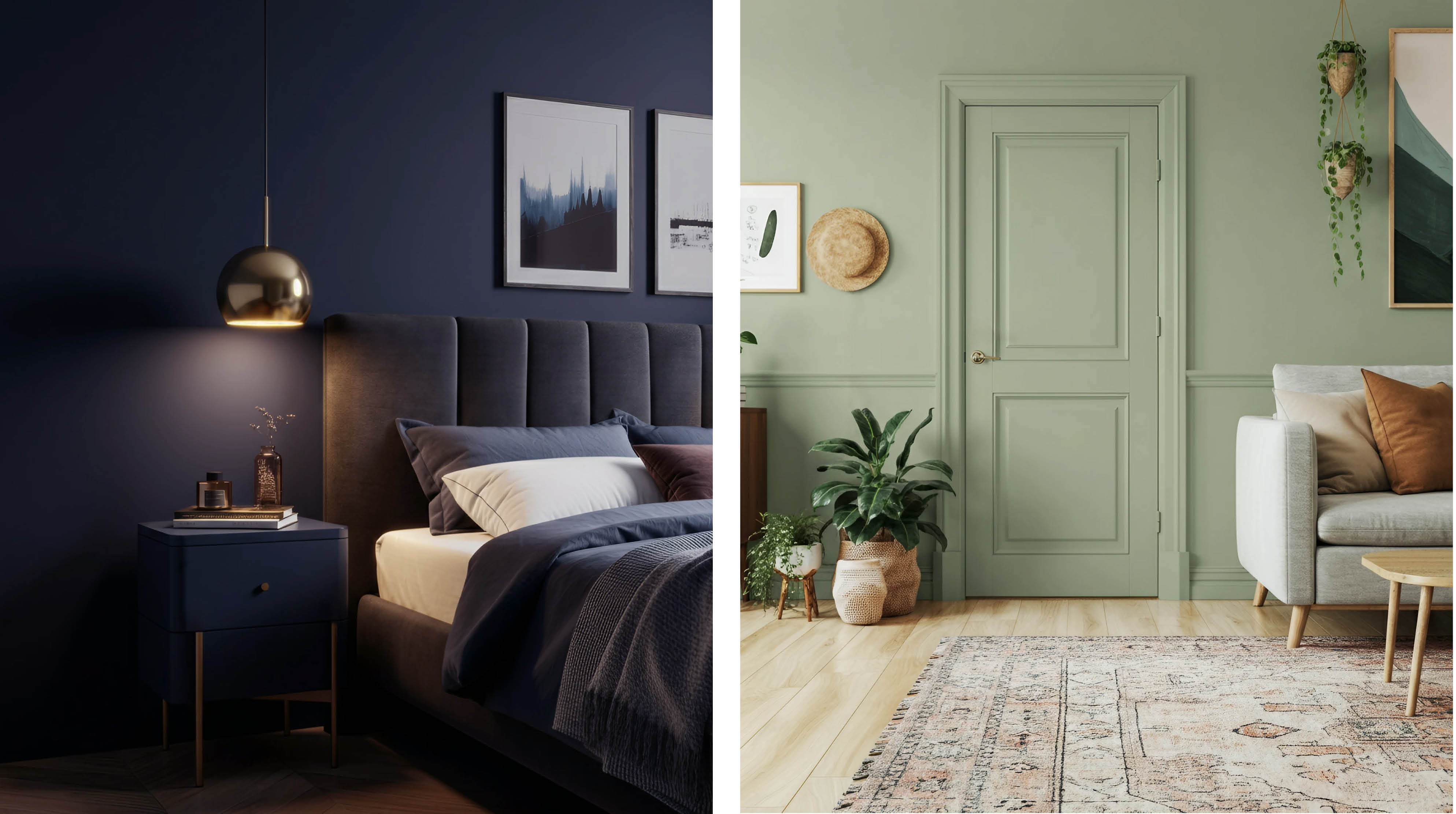How to remove mould FAQs
Caused by poor ventilation and high levels of humidity, mould growth is a common problem in homes across the UK. We’ve answered your most frequently asked questions on how to stop mould in bathrooms, bedrooms, kitchens, utilities, offices and more, preventing it from returning using our mould-resistant Guardian Paint range.


Guardian Wall Paint - FAQs
It’s important to ensure that all signs of mould are removed before painting, as the mould will continue to grow underneath the paint and eventually bleed through. Mould can also ruin your paint finish with bubbling or flaking.
- Start by ensuring your wall is clean and free from dirt, mould, and mildew. Use Rust-Oleum Sugar Soap and a cloth to thoroughly clean the surface, effectively removing any contaminants. Once clean, rinse the area well with water to eliminate any soap residue and allow the surface to dry.
- Treat mould or mildew with a proprietary mould killer and remover, following the manufacturer’s instructions. This will effectively remove the dark stains caused by mould, fungus and algae, providing a better, longer-lasting paint finish.
- For walls with stubborn or significant mould stains, apply an appropriate stain-blocking primer. This will help seal the stains and provide a uniform base for the Guardian Mould-Resistant* Wall Paint, enhancing the durability and appearance of the finish.
- Clean the surface with Rust-Oleum Sugar Soap, rinse well and allow to dry
- Remove any loose or flaking paint
- Treat any signs of mould with a proprietary mould killer and remover
- For walls with significant mould stains, apply a stain-blocking primer
- Stir and apply the first coat of Guardian Mould-Resistant* Wall Paint
- Allow 4 hours drying time before applying the second coat
The only way to permanently get rid of mould problems is prevention. Use a stain-blocking primer to prevent stubborn mould stains from bleeding through the topcoat, before decorating with Guardian Mould-Resistant Wall Paint.
Our Guardian Mould-Resistant Wall Paint is specifically designed to protect walls and prevent mould from returning*, while resisting cracking and peeling for up to 6 years. Ideal for high-humidity rooms such as kitchens, bathrooms, offices, laundry rooms and more.
Yes, if not treated properly, mould can lead to allergic reactions, asthma attacks, respiratory infections and other health conditions. The effects that damp and mould can have on respiratory systems can cause serious illness.
Follow our step by guide on removing mould from walls and prevent it from returning with our Guardian Mould-Resistant Wall Paint.
Clean the surface with Rust-Oleum Sugar Soap and treat any mould or mildew with a proprietary mould killer.
Guardian Wood Paint - FAQs
It’s important to ensure that all signs of mould are removed before painting, as the mould will continue to grow underneath the paint and eventually bleed through. Mould can also ruin your paint finish with bubbling or flaking.
- Ensure that your woodwork is clean and free from dirt, oil, wax, mould and mildew by using Rust-Oleum Sugar Soap. Rinse the area well with clean water to remove any remaining residue and allow to dry.
- Use a scraper or sanding block to carefully remove any loose or flaking paint, creating a sound surface for the new paint to adhere to.
- Treat any signs of mould or mildew with a proprietary mould killer and remover, following the manufacturer’s instructions. Allow the treated areas to dry completely before moving onto the next step. If necessary, block any remaining mould stains or knots with an appropriate primer to prevent them from bleeding through the topcoat.
- Apply two coats of Guardian Mould-Resistant† Interior Wood Paint using a brush, roller, or electric sprayer, allowing 4 hours drying time between coats.
Mould can break down the structure of woodwork and wooden furniture, causing rot and serious damage. However, if you treat the mould early on, you can prevent it from taking hold and save your woodwork.
Need to learn how to get rid of mould in wood? Simply clean the surface and treat it with a proprietary mould-killer. For particularly stubborn stains, use a stain-blocking primer before allowing to dry and applying a topcoat of Guardian Mould-Resistant† Interior Wood Paint.
Yes, mould and mildew in the home can trigger an allergic reaction i.e. nasal congestion, coughing and sneezing and in more serious cases cause respiratory infections and worsen asthma. People with wakened immune systems are more susceptible to the serious health effects caused by mould.
Mould thrives in damp conditions and high-humidity rooms with poor ventilation. Wood is an organic material that naturally absorbs and retains moisture, making it the perfect breeding ground for mould.
Yes, mould on wood can be dangerous for the furniture, but it can be also dangerous to you. Not only can mould ruin the look and integrity of wood, it can also cause respiratory problems, skin irritation and allergic reactions.
Follow these simple steps to tackle mould on wooden furniture:
- Clean the wood with Rust-Oleum Sugar Soap. Rinse with clean water and allow to dry.
- Use a scraper or sanding block to carefully remove any loose or flaking paint.
- Treat mould or mildew with a proprietary mould killer and remover, following the manufacturer’s instructions. Allow the treated areas to dry completely before moving onto the next step.
- If necessary, block any remaining mould stains or knots with a stain-blocking primer to prevent them from bleeding through the topcoat.
- Apply two coats of Guardian Mould-Resistant† Interior Wood Paint, allowing 4 hours drying time between coats
Ready to start your next project? Check out the full range of Guardian mould-resistant paints here.

*This coating contains a biocide to protect the dried film from fungal degradation. Once dried the paint film is classed as a treated article and contains the surface biocides 2-Octyl-2-H-isothiazolin-3-one 0.222% & Terbutryn 0.178% by weight. Determination of Resistance of Surface Coatings to Mould Growth ( BS3900 Part G6)
†This coating contains a biocide to protect the dried film from fungal degradation. Matt finish: Once dried the paint film is classed as a treated article and contains the surface biocides 2-Octyl-2-H-isothiazolin-3-one 0.222% & Terbutryn 0.178% by weight. Determination of Resistance of Surface Coatings to Mould Growth ( BS3900 Part G6). Satin finish: Once dried the paint film is classed as a treated article and contains the surface biocides 2-Octyl-2-H-isothiazolin-3-one 0.067% & Terbutryn 0.053% by weight. Determination of Resistance of Surface Coatings to Mould Growth ( BS3900 Part G6)
